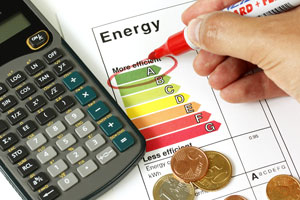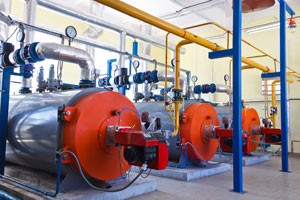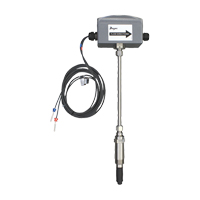 Energy costs are rising around the world. In the United States, the cost of electricity, natural gas, and coal are all expected to increase in 2020.[1] As oil prices increase, energy costs are rising in Britain, and in Australia, the cost of electricity has skyrocketed.[2] It will become increasingly necessary to manage costs by maintaining efficient operation of energy systems as energy prices continue to rise.
Energy costs are rising around the world. In the United States, the cost of electricity, natural gas, and coal are all expected to increase in 2020.[1] As oil prices increase, energy costs are rising in Britain, and in Australia, the cost of electricity has skyrocketed.[2] It will become increasingly necessary to manage costs by maintaining efficient operation of energy systems as energy prices continue to rise.
Steam is a common byproduct of energy generation in boiler systems. When energy is generated in a boiler system, heat energy is transferred to water, which generates steam used for heating. Measuring the steam produced by a boiler is the most logical way to measure boiler output, but it is extremely difficult to measure steam output accurately.[3] In a world where energy costs are only expected to increase, it is imperative that boiler output be measured accurately in order to conserve both money and energy.
 Measuring steam in boilers can be difficult using traditional methods due to varying temperature ranges, changes in density, and more. Boiler use also changes seasonally. They are often used less in the summer than the winter, which means flow rates can be very low in the summer. Vortex and differential pressure flowmeters are typically used to measure steam, but cannot measure low flow accurately. Both vortex and differential pressure meters also have moving parts that can clog or break over time, leading to higher long-term costs.[4]
Measuring steam in boilers can be difficult using traditional methods due to varying temperature ranges, changes in density, and more. Boiler use also changes seasonally. They are often used less in the summer than the winter, which means flow rates can be very low in the summer. Vortex and differential pressure flowmeters are typically used to measure steam, but cannot measure low flow accurately. Both vortex and differential pressure meters also have moving parts that can clog or break over time, leading to higher long-term costs.[4]
Given the difficulty of accurately measuring steam, what other methods can be used to understand the efficiency of your boiler? A good alternative is to measure the steam condensate. Because matter is neither created nor destroyed in a closed system, the mass of the steam is the same as the mass of the condensate, but the latter can be measured much more easily.[5] By metering the condensate, you will avoid the many issues that come with measuring steam, including the volatility of the steam environment and errors caused by low flow.
 If you are interested in metering steam condensate, the Dwyer Insertion Thermal Energy Meter, Series IEFB, is a great choice. The meter is an insertion-style magmeter, so when used with an isolation valve there is no need to shut down the line for installation. It is electromagnetic and has no moving parts, providing accuracy paired with a long lifespan and no risk of clogging. The IEFB can measure all five necessary characteristics of condensate: velocity, volume flow, mass flow, temperature, and power. These values can be viewed on the optional integral LCD display or remote display so you can easily understand your boiler’s output and efficiency in every season. Whether it is summer or winter, you will obtain accurate output readings that will allow you to power the boiler appropriately, saving energy input and decreasing costs.
If you are interested in metering steam condensate, the Dwyer Insertion Thermal Energy Meter, Series IEFB, is a great choice. The meter is an insertion-style magmeter, so when used with an isolation valve there is no need to shut down the line for installation. It is electromagnetic and has no moving parts, providing accuracy paired with a long lifespan and no risk of clogging. The IEFB can measure all five necessary characteristics of condensate: velocity, volume flow, mass flow, temperature, and power. These values can be viewed on the optional integral LCD display or remote display so you can easily understand your boiler’s output and efficiency in every season. Whether it is summer or winter, you will obtain accurate output readings that will allow you to power the boiler appropriately, saving energy input and decreasing costs.
[1] https://www.eia.gov/outlooks/steo/report/electricity.php. https://www.eia.gov/outlooks/steo/report/coal.php. https://www.eia.gov/outlooks/steo/report/natgas.php.
[2] https://www.bbc.com/news/business-47133564. https://www.abc.net.au/news/2018-07-18/electricity-price-rises-chart-of-the-day/9985300.
[3] https://sciencing.com/calculate-condensate-per-amount-steam-8599087.html.
[4] https://www.flowcontrolnetwork.com/steam-metering-condensate-side/.
[5] https://www.flowcontrolnetwork.com/steam-metering-condensate-side/.
